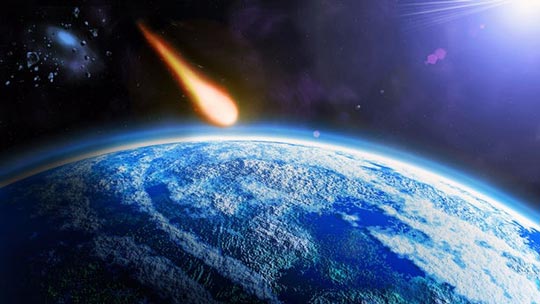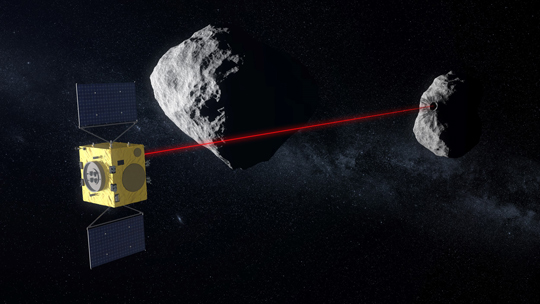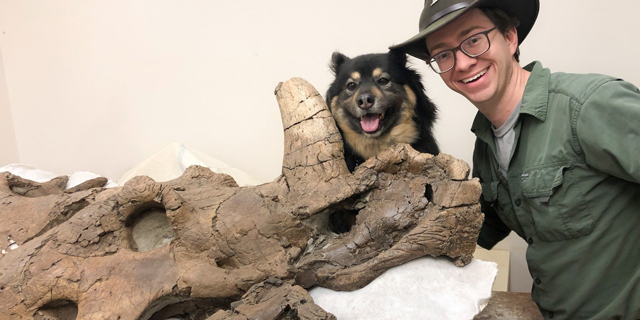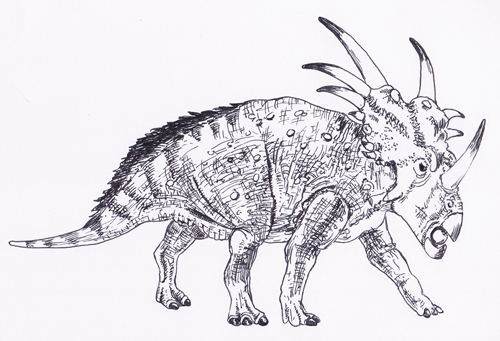Extra-terrestrial Objects Targeted in Bid to Prevent Asteroid Impacts
Researcher Calls for Assistance to Help Earth Avoid Asteroid Impacts
Most scientists believe that Earth was subjected to a huge extra-terrestrial impact event around sixty-six million years ago. This event referred to as the Chicxulub impactor, as the centre of the impact crater is close to the town of Chicxulub on the Yucatán Peninsula of Mexico, probably played a significant role in the mass extinction event that marked the end of the Mesozoic. In a bid to avoid our own species going the way of the Dinosauria, a Queen’s University Belfast researcher is calling on amateur astronomers to help with a European-wide mission helping to limit the possibility of future asteroid impacts.
Professor Alan Fitzsimmons (Astrophysics Research Centre at Queen’s), is a senior mission advisor for the European Space Agency’s (ESA) Hera spacecraft. Hera is part of humanity’s first deep space test of planetary defence against asteroids. What was once the stuff of science-fiction is now fast becoming a reality with scientists wanting to learn more about the enormous quantity of vagrant material associated with our solar system and the potential threat we face from extra-terrestrial impacts.
Hera will also mark our first attempt to rendezvous a spacecraft with a binary asteroid system. This is a little understood class of rocks and ice which makes up around fifteen per cent of all known near-Earth asteroids. The spacecraft was presented to ESA’s Space19+ meeting in Seville (Spain), this week as part of the Agency’s Space Safety programme, where Europe’s space ministers made the decision to fly the mission. Hera has in effect, the green for go light.
A Simulation Showing Hera Analysing an Asteroid
Picture credit: European Space Agency
Trying to Assess the Threat of Asteroid Impacts in Collaboration with NASA
The mission is the European contribution to an international double-spacecraft collaboration. NASA will first hit the moon of the asteroid with its own spacecraft and Hera will then follow-up with a detailed post-impact survey. As well as exploring its final destination, the Didymos binary asteroid system, the Hera spacecraft could potentially fly past one or more bodies on the way. But the mission team require additional observations to help select their targets.
Professor Fitzsimmons commented:
“Asteroid research is one area of astronomy where amateur observers continue to make an essential contribution. The flyby candidates we have identified so far are little more than tiny dots of light in the sky, so faint they are invisible to the naked eye. We need as much help as possible to refine their orbits and measure their properties, which could give clues to their characteristics in advance of Hera’s launch in October 2024.”
Help Wanted
The flyby opportunity arises because Hera will head out to match Didymos’s 770-day orbit around the Sun, which circles from less than 10 million kilometres from Earth to out beyond Mars, at more than double Earth’s Sunward distance. In the process Hera will pass multiple asteroids and squeeze past the inner edge of the main Asteroid Belt located between Mars and Jupiter.
ESA’s European Space Operations Centre (ESOC), has come up with a flyby shortlist.
ESA’s Hera project scientist Michael Küppers stated:
“For a 2-5 km asteroid employing Hera’s main Asteroid Framing Camera, we would aim for a flyby distance of 500 kilometres, but close approaches without real flybys are still useful, as they allow asteroid observations from angles unachievable from Earth.”
The precise targeting will come right down to the day of launch, how much fuel remains after fine-tuning Hera’s trajectory to Didymos and how accurately it will be possible to refine the potential flyby targets’ orbits. The amount of fine-tuning will also be dependent on the Ariane 6 launcher which will place Hera onto its interplanetary trajectory.
From ESOC’s full set of flyby possibilities Professor Fitzsimmons and the Hera investigation team have come up with an initial list of seven candidate asteroids they would like amateur astronomers to try to observe.
Professor Fitzsimmons explained:
“Only three of these bodies have known diameters and albedos, or surface brightness. None of them have known rotation periods, this is something experienced amateurs could try and measure for us, especially for the brighter objects.”
ESA’s first experience with asteroid flybys came during Europe’s Rosetta mission, when the comet chaser passed two Main Belt asteroids in 2008 and 2010, giving the spacecraft an early opportunity to try out its suite of scientific instruments ahead of reaching comet 67P Churyumov–Gerasimenko in 2014. However, Rosetta was a bus-sized spacecraft on a ten-year cruise phase with multiple planetary flybys, while Hera will be only the size of a small desk, headed on a more straightforward route through deep space for a little over twenty-four months.
So, any additional asteroid encounter cannot be taken for granted but would be a scientifically valuable extra. Hence the rallying call to the amateur astronomer community to help select flyby targets.
After all, we don’t want to go the way of the dinosaurs do we.
Asteroid Impact – Assistance Required to Help Avoid Extra-terrestrial Impacts

Picture credit: Deposit Photos/Paul Paladin
Everything Dinosaur acknowledges the assistance of a press release from Queen’s University Belfast in the compilation of this article.
The Everything Dinosaur website: Everything Dinosaur.




